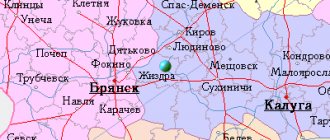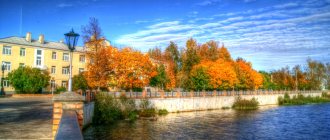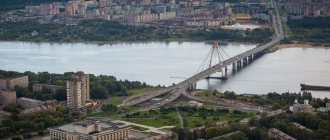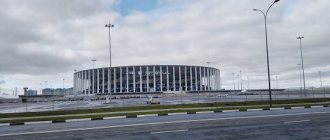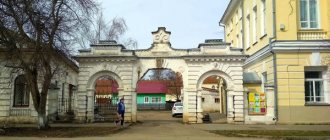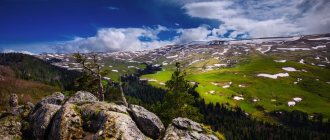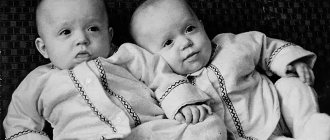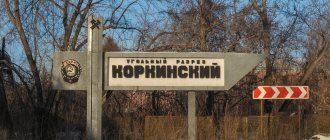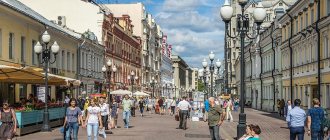The names of the streets tell about the city
In Russia, they conducted a study on streets: they compared the length and shape of about 560 thousand streets in 43 thousand settlements.
The popularity of their names was also appreciated. Are there Cherepovets names in the top 10 and how do they appear? Popular and new
The ten most popular names of Russian streets look like this (in descending order): Central (11,493 streets), Molodezhnaya, Shkolnaya, Sovetskaya, Sadovaya, Lesnaya, Novaya, Lenina, Mira, Embankment. Nine of these names can be found on the map of Cherepovets; we only don’t have Novaya Street, but we have Novaya Komsomolskaya, Novaya Molodezhnaya, Novaya Shkolnaya. But there are even two Central ones: one in New Ugly, the other on the territory of CherMK (the plant is a kind of city within a city: there are Martenovskaya, Liteyshchikov, Metallistov, Shikhtovaya, Slakovy Proezd, etc. streets).
According to the Federal Information Address Register, there are currently 260 streets, avenues, alleys, passages, and squares in Cherepovets.
In recent years, 28 new streets have appeared. Among them are Yuzhnaya, Novatorov, Nadezhdy, Druzhnaya, Dachnaya, Ratnaya, Shirokaya, Optimists, Kraynaya, Ochelenko, Kemerovo, Vanchikova, Lipetskaya, Novoselov and others. The most recent streets to grow in the Zasheksninsky district in 2015 were Lipetskaya, Novokuznetskaya, Kemerovo, Donetskaya, Vanchikova, and Volgogradsky Boulevard. In 2017, names were assigned to gardening and dacha cooperatives located on the eastern side of the Northern microdistrict and in the northern part of the Zayagorbsky district. They bear the names of city-forming enterprises.
In the near future, four new streets may appear in the city with the names Gvardeiskaya, Borodulina, Petrova, Amosova.
How streets are named
Since names are the calling card of any settlement, especially a large city, the process of assigning a name to a street is a serious and responsible matter. Igor Makuchev, head of the information support department for urban planning activities of the Department of Architecture and Urban Planning of Cherepovets, talks about how city streets acquire names:
“In the city, under the leadership of the mayor’s office, a commission is working on an ongoing basis to perpetuate the memory of historical events and the activities of outstanding personalities. In addition to employees of the mayor's office, its members include cultural figures and representatives of the public. Depending on the issue being resolved - about 10 people. The commission, based on requests from initiative groups of citizens, city enterprises, public associations and authorities, can decide to perpetuate events or personalities in various forms, including by naming any projected street, as part of the exercise of the powers of the mayor’s office. Decisions are made by voting, and in some cases may be accompanied by public discussion.
In accordance with paragraph 27 of Article 8 of the Charter of the city of Cherepovets, issues of local significance of the urban district include, in particular, the assignment of names to elements of the road network (streets, alleys, embankments, bridges, squares, etc.), elements of the planning structure within the boundaries urban district (neighborhoods, districts), change, cancellation of such names. This is also included in the powers of management. There have been no requests from citizens regarding the cancellation of street names for a long time. But I know that something similar once happened to the street that now bears the name of Ivan Milyutin. Previously, it was Sadovskaya Street, then Engelsa, and since 2000 - Milyutin Street.
In order for the newly designed street to acquire a name, an approved planning project is required in accordance with the city master plan. Only after this will a list of proposed names be submitted to the commission for consideration.”
The character of the city on its map
As Igor Makuchev said, the names of our streets can be divided into groups: in honor of people who glorified the city, the country (for example, Vereshchagin Street); in honor of outstanding political figures (Lenin); in honor of writers and poets (Gogol); names reflecting Soviet reality (Communists), professional activities of city residents (Metallurgists), natural conditions or geographic location (Solnechnaya); in honor of other cities, towns and countries (Lipetskaya); historical names (Borodinskaya).
Many names are understandable only to Cherepovets residents (and even then not all of them and not everyone). What can the names of our streets tell a visitor who opens a map of the city?
Probably, the first thing that will attract attention is the industrial theme: Metallurgists, Steelworkers streets, Domenshchikov Boulevard, Stroiteley Avenue, Sudostroitelnaya Street, Khimikov Street and Square... It’s immediately clear that the city is a working city.
The streets of Cherepovets tell the history of the city
In Russia, they conducted a study on streets: they compared the length and shape of about 560 thousand streets in 43 thousand settlements. The popularity of their names was also appreciated. Are there Cherepovets names in the top 10 and how do they appear?
Popular and new
The ten most popular names of Russian streets look like this (in descending order): Central (11,493 streets), Molodezhnaya, Shkolnaya, Sovetskaya, Sadovaya, Lesnaya, Novaya, Lenina, Mira, Embankment. Nine of these names can be found on the map of Cherepovets; we only don’t have Novaya Street, but we have Novaya Komsomolskaya, Novaya Molodezhnaya, Novaya Shkolnaya. But there are even two Central ones: one in New Ugly, the other on the territory of CherMK (the plant is a kind of city within a city: there are Martenovskaya, Liteyshchikov, Metallistov, Shikhtovaya, Slakovy Proezd, etc. streets).
According to the Federal Information Address Register, there are currently 260 streets, avenues, alleys, passages, and squares in Cherepovets.
In recent years, 28 new streets have appeared. Among them are Yuzhnaya, Novatorov, Nadezhdy, Druzhnaya, Dachnaya, Ratnaya, Shirokaya, Optimists, Kraynaya, Ochelenko, Kemerovo, Vanchikova, Lipetskaya, Novoselov and others. The most recent streets to grow in the Zasheksninsky district in 2015 were Lipetskaya, Novokuznetskaya, Kemerovo, Donetskaya, Vanchikova, and Volgogradsky Boulevard. In 2017, names were assigned to gardening and dacha cooperatives located on the eastern side of the Northern microdistrict and in the northern part of the Zayagorbsky district. They bear the names of city-forming enterprises.
In the near future, four new streets may appear in the city with the names Gvardeiskaya, Borodulina, Petrova, Amosova.
How streets are named
Since names are the calling card of any settlement, especially a large city, the process of assigning a name to a street is a serious and responsible matter. Igor Makuchev, head of the information support department for urban planning activities of the Department of Architecture and Urban Planning of Cherepovets, talks about how city streets acquire names:
The character of the city on its map
As Igor Makuchev said, the names of our streets can be divided into groups: in honor of people who glorified the city, the country (for example, Vereshchagin Street); in honor of outstanding political figures (Lenin); in honor of writers and poets (Gogol); names reflecting Soviet reality (Communists), professional activities of city residents (Metallurgists), natural conditions or geographic location (Solnechnaya); in honor of other cities, towns and countries (Lipetskaya); historical names (Borodinskaya).
Many names are understandable only to Cherepovets residents (and even then not all of them and not everyone). What can the names of our streets tell a visitor who opens a map of the city?
Probably, the first thing that will attract attention is the industrial theme: Metallurgists, Steelworkers streets, Domenshchikov Boulevard, Stroiteley Avenue, Sudostroitelnaya Street, Khimikov Street and Square... It’s immediately clear that the city is a working city.
In six Russian cities there are Vologodskaya and Cherepovetskaya streets
Ufa boasts not only Cherepovetskaya Street, but also Cherepovetsky Proezd, and in Vologda the street named after the city of metallurgists looks more like a village [photo]
In which cities and towns in Russia there are signs with the inscription “street. Vologodskaya" or "st. Cherepovetskaya"? Komsomolskaya Pravda tried to find out which passages, avenues, alleys and streets are toponomically connected with the largest cities of the Vologda region.
It turned out that together these two streets exist only in six cities of Russia - in Vologda itself, Moscow, Kemerovo, as well as in the more southern Sochi, Rostov-on-Don and Ufa. Moreover, in the capital of Bashkortostan you can find not only Cherepovetskaya Street, but also Cherepovetsky Proezd.
In Moscow, Cherepovetskaya Street is located next to Vologodsky Proezd, in the Lianozovo district. This passage was named so in 1990 because of its location in the north of the capital, just on the road to the Vologda region. The street named after the city of metallurgists received its modern name in 1965; before that it was called Leningradskaya. There is a museum of the artist Konstantin Vasiliev, a health school at Moscow State University, a kindergarten, a clinic and several supermarkets.
The inscription “Vologda” on houses is in almost 30 settlements in Russia and Ukraine. In addition to the six cities listed above, there is such a street in Cherepovets, St. Petersburg, Arkhangelsk, Kostroma, Penza, Berezniki in the Perm Territory, Izhevsk, Samara, Voronezh, Kamyshin in the Volgograd Region, Kazan, Astrakhan, Belgorod, Engelsk in the Saratov Region and even in the capital of Chechnya - Grozny.
Cherepovetskaya Street is located in 18 cities of Russia and Ukraine. Photo: Olga KASHINTSEVA
“No one in our editorial office had ever heard of such a street before.” We looked at the map. Exactly! It turns out that we have Vologda,” said Elena Vavilova, deputy editor for the daily issue of KP-Kazan. — In a village near Kazan. The street is very small, there are several private houses on it.
There are a lot of Vologda streets in Siberia and the Far East: in Yekaterinburg, Khabarovsk, Ulan-Ude, Leninsk-Kuznetsky in the Kemerovo region and in Komsomolsk-on-Amur. In Ukraine, such a street was “lost” in Kramatorsk, Donetsk region, and in Kirovograd.
Cherepovetskaya Street is located in 18 settlements in Russia and Ukraine. Kirillov and Sokol in the Vologda region, neighboring Rybinsk, Nizhny Novgorod, Perm, Volgograd and even in the village of Mirny in the Bryansk region can be proud of this toponym. But in Lipetsk the street was named Cherepovetskaya rather out of despair. In the 60s of the last century it was called Oktyabrskaya, but then another street with a similar name appeared and the former Oktyabrskaya was given the name of the city of metallurgists. Here on Cherepovetskaya Street there are mainly private houses.
Cherepovetskaya Street in Vologda is more like a village with garbage near the hut. Photo: Olga KASHINTSEVA
By the way, in Ukraine there are more Cherepovets streets than Vologda streets. The name of the city of metallurgists can be seen in large cities - Dnepropetrovsk, Donetsk, Chernivtsi and Zaporozhye.
“In Zaporozhye, this street is located in the private sector in a residential area not far from the banks of the Dnieper,” Irina Sobolevskaya, a colleague from Komsomolskaya Pravda-Zaporozhye, shared with the KP correspondent. — There are about a hundred cottages of various sizes on Cherepovetskaya, there are no large shops or institutions.
True, in Vologda and Cherepovets themselves, named streets are also located on the outskirts. In Vologda, Cherepovetskaya is lost somewhere between Goncharnaya and Shekninskaya and looks more like a small village with a lot of garbage near the huts. Vologda is located in the remote Lukyanovo region. Among the notable things here is the Vologda Orphanage named after Gavrilin, an educational institution for orphans and children left without parental care.
You can walk along Vologodskaya Street not only in Vologda and Cherepovets, but in almost 30 settlements in Russia and Ukraine. Photo: Olga KASHINTSEVA
“Everyone knows about Lukyanov’s problems: that the devil is in the middle of nowhere, and that the bridge will never be built!” — Vologda resident Daria, who lives in a house on Vologodskaya Street, 8, is indignant. “We have a lot of degraded elements, but most of them drink quietly.” We also have a lot of pensioners whom “kind” children send to us - apartments here are much cheaper, but they still don’t have to go to work! Young families are trying to move to the city, but hardly anyone will go to Lukyanovo just to hang out. In general, the area is quite quiet, unless, of course, you hang out at the 24-hour kiosk at night.
There is no street of the same name in Cherepovets, but, of course, there is Vologodskaya. It runs from the railway station to the central Lenin Street. Of note, only school No. 4 and the municipal educational institution “Special general education boarding school of the first type” can be noted, which in Soviet times was moved to the city of metallurgists from the territory of the Kirillo-Belozersky monastery.
This is interesting
According to the official website of the Legislative Assembly of the Vologda Region, in Sevastopol several streets are toponomically connected with our region. Vologodskaya and Belozerskaya streets are named after the Vologda and Belozersk regiments, whose soldiers bravely fought in the defense of the city in the Crimean War of 1854-1855.
Tour guide Alexey Oreshkin: “You can tell about the history of Cherepovets while standing on Metallurgists Square”
“Their faces were red, ruddy, their eyes were blue, and their hair was white as flax, they wore linen clothes and dressed in beaver fur coats with the fur facing out, they drank barley drink, ate beaver and squirrel meat and honey,” this is how he describes the possible inhabitants ancient Cherepovets, Arab traveler of the 12th century Abu Hamid al-Garnati. Tour guide Alexey Oreshkin told Cherinfo about the ancestors of the Cherepovites, the formation of the “city of metallurgists” and the turtles in its name.
What is Cherepovets famous for?
Many people ask: what is this area famous for?
This city is the birthplace of the famous artist Vasily Vasilyevich Vereshchagin. Artist Vasily Vasilyevich Vereshchagin (October 14 (26), 1842 - March 31 (April 13), 1904)
This man created many battle paintings in a documentary style - for he himself participated in the battles. Not far from the Resurrection Cathedral, a monument was erected to the founders of Cherepovets - the monks Theodosius and Athanasius.
Fans of ancient cities will be interested in an article about the sights of Pskov.
“The Lord will preserve your entry”
I usually start excursions from Cathedral Hill, since the history of the city begins from here. Next to the Resurrection Cathedral there used to be a Trinity Church with a high bell tower; it has not survived.
At the edge of the Cathedral Hill, if you climb up the cobblestone street from the monument to Athanasius and Theodosius, there was a wooden “triumphal” arch. This was the main entrance from the river. From old photographs it can be seen that it was written: “Welcome” and “The Lord will preserve your entry.” For the arrival of particularly famous guests, for example, grand dukes, the arch was decorated with flags and flowers.
From the arch downwards there was a cobblestone descent to the piers. After the cobblestone road, the road turned to a wooden bridge and dam. Those places were flooded during the creation of the Rybinsk Reservoir. Now the wooden bridge, dam, dock, harbor, as well as the triumphal arch and the Trinity Church with the bell tower can only be seen on pre-revolutionary postcards.
In the area of the Stroitel beach, near the river bank, there used to be the village of Nikolskaya Sloboda with an estate. Not far away, on the site of the tuberculosis dispensary, was the Pushkino estate. Where Steelworkers Street begins, stood the village of Christmas. At the intersection of Stalevarov and Lenin streets there was the Andreevka estate. On the site of Krasnoarmeyskaya Square there was the village of Fedosevo with two large stone churches and a separate bell tower.
Beyond the Sheksnaya River are Maturino, Gritino, Budkovo, Zatsepkino, and the Gorka estate. On the site of Zarechye there were also different settlements: the Makarino estate, the villages of Borok, Pitino, Uryvkovo, Elninskoye, and the village of Bogoslovo. To the north are Serovo, Austinskoye, Obukhovo. On the western outskirts there are Pankino, Kichino, Novaya Derevnya, Frolovskoye, the village of Bogorodskoye and others.
In the second half of the 18th century, Catherine II signed a decree: she ordered the establishment of a city “at the Cherepovsky Monastery.” This happened on November 4, 1777. Then Cherepovets was pronounced as CherEpovets, with emphasis on the center of the word.
From the river bank and Sobornaya Gorka, tourists and I walk along Sovetsky Avenue, formerly Voskresensky. This is the only street that has preserved the appearance of pre-revolutionary Cherepovets.
LiveInternetLiveInternet
Metallurgists Square in Cherepovets
Metallurgists Square is the central square of Cherepovets. It got its name in honor of metallurgists - workers of the Cherepovets Metallurgical Plant. On the western side, Metallurgists Square is limited by Vologodskaya Street, on the eastern side by Vereshchagina Street and the Lenin Komsomol Park. In Soviet times, May Day and November demonstrations took place on this square, and now Cherepovets communists like to hold rallies here. Although this square has now turned into such a quiet, uncrowded corner in the city center.
Park named after Lenin Komsomol on Metallurgists Square
In front of the Lenin Komsomol Park, which borders the area from Maxim Gorky Street, stands the monument to V.I. Lenin, a traditional monument to the main squares of Soviet-era cities. The laying of the monument to V.I. Lenin took place on April 21, 1960 in honor of the 90th anniversary of the birth of the leader of the proletariat, to which a solemn meeting was dedicated.
All Cherepovsk residents have so many memories associated with this square! Admission to the Pioneers and Komsomol, demonstrations, and rallies in honor of labor victories took place here. On August 25, 1955, a rally of thousands took place on the square dedicated to the launch of the first blast furnace, which marked the birth of the plant and the rebirth of the city.
On May 1, 1958, at the head of a column of metallurgists, a truck passed through the square, on which steelmaker Grigory Averkin carried the first ingot of steel that had not yet cooled. And then there were rallies regarding the launch of rolling mills, a hardware plant, chemical plants...
Monument to V.I. Lenin
And to the left of it, if you look at the park, on Vereshchagin Street there is a monument to V.V. Vereshchagin.
Monument to V.V. Vereshchagin
View of Vereshchagina Street
Now it is difficult to imagine that on the site of the current Metallurgists Square there was a Korzhavsky swamp, from which the Korzhavka River flowed, flowing into the Yagorba River. And on the site of the park named after the Lenin Komsomol there was a Korzhavskoe cemetery, where the mayor Ivan Andreevich Milyutin was buried.
There were private wooden houses around the Korzhava swamp. In 1949, when the city was being reborn thanks to the construction of a metallurgical plant, the swamp was drained (as a result of which the Korzhavka River disappeared), and surveyors marked out the future area. On August 30, 1952, it was decided to name the newly formed square Metallurgists Square. It was supposed to become the center of the city and remained so until the 90s of the twentieth century. Now on New Year's Day a Christmas tree is installed on the square.
Christmas tree on Metallurgists Square with a view of the park and the Komsomolets cinema (from the Internet, January 2018)
View from the park to Metallurgists Square and the Christmas tree (from the Internet, 2018)
As construction veterans recalled, “the technical equipment of the Cherepovets construction site left much to be desired. Almost everything was done using old-fashioned methods. No mechanization, the main draft force is a horse, the main tools are a shovel, a wheelbarrow, a stretcher. Forty people, one car and two horses were employed in the construction of housing.” The houses on this square were built mostly four-story, in style closer to the Stalinist Empire style. There were and are now many shops on the ground floors.
An elite house in which party and economic assets and leaders of construction and metallurgy received free housing was a new building at the address: Metallurgists Square, 5. Deputies of the Supreme Council of the RSFSR, delegates of the CPSU congresses, Heroes of Socialist Labor, and order bearers lived here. The house was commissioned in 1952. It is four stories high, with a circular attic dormer window in the center of the building, a now missing front entrance decorated with plaster garlands, and three porches with entrances from the courtyard. The ground floor of the building housed the Bridal Salon store for many years and still houses one of the oldest post offices in the city.
In 2005, in the year of the 50th anniversary of the Cherepovets Metallurgical Plant, the monument “Continuity of Generations” appeared on Metallurgists Square. It consists of two sculptures - father and son. The son, putting on his father's helmet, walks in the direction of the metallurgical plant. The monument is located at the very beginning of Metallurgists Street, which stretches towards the metallurgical plant.
Monument “Continuity of Generations” (from the Internet)
View of the monument from the park
Next to the park on Maxim Gorky Street there is the Komsomolets cinema (that’s what it was called in Soviet times and that’s what people traditionally call it). We can say that everyone built it. It was a real Komsomol construction site. Komsomol youth brigades worked on digging a pit, and on the construction of the foundation, and on brickwork, and on finishing work. Komsomol members and youth from the metallurgical plant and other enterprises, soldiers, students, and schoolchildren came to the aid of the builders. It turned out not to be a cinema, but a movie palace!
Cinema (House of Music and Cinema) on Maxim Gorky Street, near Metallurgists Square
View of the park, Maxim Gorky Street and cinema from above (photo from the Internet)
Once upon a time, on the territory of Komsomolsky Park there was a Korzhava cemetery, where the mayor Ivan Andreevich Milyutin was buried. And so on November 3, 1996, a monument was erected in the park at the site of the alleged burial of A.I. Milyutin. The sculptor who created the bust-monument was Alexander Shebunin. The public organization “Old Town” supported him in this matter. The creation of the monument was free, it was done on a voluntary basis. The municipality only had to allocate money for installation. The pedestal is engraved with a signature, also authored by Alexander Shebunin: “To Ivan Andreevich Milyutin, the first head of Cherepovets with repentance from his fellow citizens.”
Bust of I. A. Milyutin in Komsomolsky Park (from the Internet)
Fountain in the park
Metallurgists Square was conceived as the main square of the new city. But over time, they began to reconstruct the old main street of Cherepovets - Sovetsky Prospekt, recreating the historical appearance of Cherepovets. The old town again became its center. The buildings located on Sovetsky Prospekt are being systematically restored. The pedestrian part of Sovetsky (Voskresensky) Avenue is being improved, which gives hope for the revival of the old city, organically integrated into the appearance of industrial Cherepovets. At this stage, the architecture of Cherepovets, like any developing city, is somewhat eclectic, which, however, gives it a special, incomparable charm. I already wrote about Sovetsky Prospekt; it, like Cathedral Hill, is a decoration of the city.
From open sources. The photos are mine and from the Internet.
Series of messages “Architecture”:
Part 1 - Modern architecture in St. Petersburg. Printing house P. V. Berezin Part 2 - Empire style - Imperial style in fashion and architecture ... Part 23 - Russian estate: dreams, dreams ... Part 24 - Cathedral of St. Athanasius and Theodosius Part 25 - Metallurgists Square in Cherepovets Part 26 - Paris Cathedral Our Lady (Notre Dame de Paris).
Series of messages “Cherepovets”:
Part 1 — Vladimir Galskoy “The Path of Fatigue” Part 2 — Green oak near the Lukomorye… … Part 29 — Seven local “wonders of the world” of the Cherepovets region Part 30 — Cathedral of Saints Athanasius and Theodosius Part 31 — Metallurgists Square in Cherepovets Part 32 - River nostalgic... Part 33 - Cathedral Hill in Cherepovets Part 34 - Leonid Parferov about Cherepovets, Ferapontov and others. Part 35 - Post of sadness... Part 36 - I will take you to the museum...
